Introduction
[specs-box]
Plant Factory is a plant making tool by E-on Software that allows artists to create plants of all kinds from the smallest grass to the biggest oak trees and everything in between. It uses a node based system for generating plants as well as some innovative ways of controlling the shape of your plant in the viewport. It integrates with E-on’s Vue software but can also be used to export plants to your favorite 3D package complete with a full rig if you so desire.
First Impressions
When I first saw the videos of Plant Factory I was immediately intrigued by its workflow which seemed to blend both a procedural and a very artist friendly approach to making any kind of tree or plant – complete with wind animation.
The first thing I
noticed when
opening the software was that it comes with very few examples and
barely none of them are very common except for perhaps the palm tree.
There is a section when you load a plant that at first glance looks
like an ordinary category but when you click on it, it points you to
buying plants which almost reminded me of micro-transactions in
“free-to-play” games. The prices at writing vary from around $15
to $50 so they aren’t what I would call cheap but that would depend
on how much your time is worth. It was a bit disappointing to see but
I was still excited about the interface and how you go about creating
trees.
Distributing your plants
First I want to get a fairly hotly debated topic surrounding Plant Factory out of the
way as it may or may not affect your purchasing decision. I’ll spare
you most of the story but let’s just say that when Plant
Factory
was initially launched, there were severe limitations on how you
could distribute your source or exported plants to other people. This
caused quite a stir and E-on has mostly addressed this with the
latest version, 2014.6, but there are still some limitations.
The rules now are that
you are
allowed to sell your plants but it must also be available on E-on’s
Cornucopia website where they sell additional plants. It can also not
be sold at more than 1.5x the price you sell it at elsewhere and you
must specify in the filename that it was created with Plant Factory.
In fact, the filename must start with “PlantFactory” and in the
file’s description you must include “Created using E-on Software
PlantFactory”.
This applies to exported
meshes as
well but the source Plant Factory file must be available on
Cornucopia – meaning people who buy the Plant Factory file can
change your nodes as they see fit and you have no say in it. You
can’t just sell or give away the exported mesh. The EULA also
specifically mentions static meshes, you are not allowed to sell or
give away animated meshes. All this applies even if you just want to
give your Plant Factory plant to a friend. You have to go through
Cornucopia in that case as well, although it’s integrated as an
option within Plant Factory. Whether this sounds like a big deal to
you or not I’ll leave to each individual reading this review. (Note:
more information regarding plant distribution limitations can be found
on E-on’s
website)
Creating plants
You can go about creating trees in three different ways in Plant Factory. The first option you have is
to just load a preset and use random seeds to generate variations of
the plant very quickly – but as I mentioned there are very few
presets that come with the software. You can load a preset and fairly
easily modify it to get it to look like the plant you’re after. The
few presets that do exist do cover the different types of plants,
like flowers, bushes and trees.
The second option is similar, but instead of just loading the preset you get to draw the
plant in the viewport. Say you want a palm tree that bends out over a
beach, you have full control of the curvature of the main stem as you
draw it out in the viewport while all the palm leaves will populate
themselves automatically according to the rules set up in the preset.
You also have the choice to draw out the leaves yourself from the
stem and modify their orientation in the viewport. In both the first
and second option you can modify its node graph to easily adjust its
settings. There’s also a tool called “Prune” that lets you
manually cut off specific branches in the viewport making you feel
like a digital gardener.
The third option, and the most time consuming and perhaps daunting one, is to build one from scratch
using the node graph. As with any system, it takes a little bit
getting used to how it handles certain things but overall I’d say
it was pretty easy to learn. It didn’t take me more than a day or
two to feel comfortable with it. One of the key nodes is the loop
node. With trees, for an example, you get a lot of repeated elements:
The main trunk spawns branches, those branches spawn smaller branches
and so on. Using the loop node you can set how many levels deep you
want branches to spawn. This allows multiple branches to spawn and
inherit properties from the previous node so that branches get
smaller the more they branch of. After that you can add a node to add
leaves or any other object. Any setup using nodes only you’ve
created can also be recreated – once saved — using the drawing a
plant in the viewport feature I mentioned earlier.
While overall I give high marks to how the node system is set up, my main gripe is with its curve
editor. Pretty much every parameter can be controlled by a curve – like the radius over the length of a branch for an example. So the curve editor is important in the creation of each element of the
plant. One of the gripes I have with it is I haven’t found a way to
restrict moving the vertices on the curve up/down or left/right. This
makes fine adjustments a bit of a pain. There’s also some lacking
features when controlling the vertices’ tangents – like the fact
that all tangents have to have the same interpolation.
Perhaps the biggest problem the curve editor has caused me is when trying to make
round petals that don’t have any sharp edges. I’ve noticed this
issue on the included presets too when you zoom in. From far away
this isn’t a big deal but the closer you get the bigger the problem
gets. You can solve it with an opacity map but ideally I’d like to
see this addressed in the software.
Another criticism I have is how little control you have over imported objects. There is an
import object node but it only has the most basic features such as
transform. There’s no way to spawn children from an imported object
and I don’t quite see why this wasn’t included. This pretty much
forces imported objects to only be added at the very end of a graph.
It also lacks “Axis Perturbation”, a feature that other nodes
have that allows you to add a bit of random noise (akin to putting a
noise modifier onto an object in 3DS Max) to each object that is
created. This would have been handy to create a bit of variety. It’s
certainly very handy on the nodes that has it.
Overall I would say the
ease of use
factor is really good while also allowing the user to customize
almost all details easily through the nodes. I always feel in
control and I can create plants very quickly, and create variations
of those plants at the touch of a button or by drawing it in the
viewport. This is praise I can’t give many other plant generating
tools out there. Using the node graph I can take nodes from one
preset and combine it with nodes from another preset – one of the
many advantages of a node based system for any creation tool – or
just modify nodes a bit to get one preset plant to look like what I
am after.

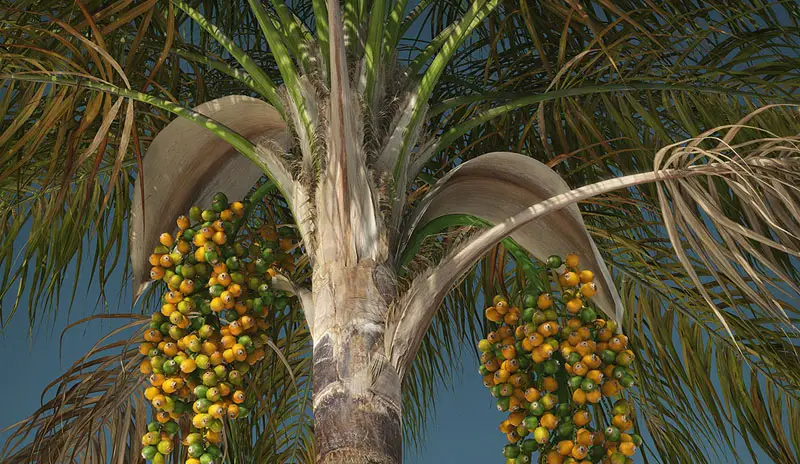


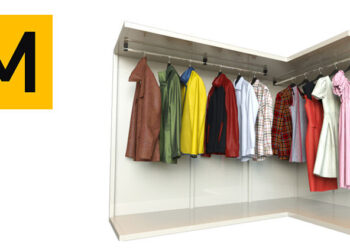
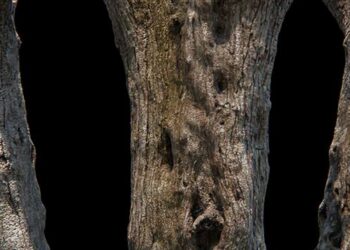
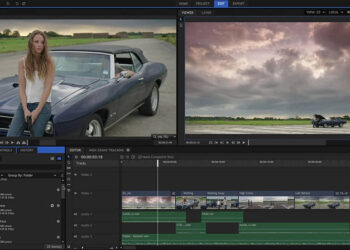



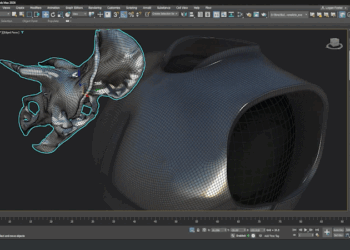

Thanks for this interesting review Torbjorn.
In my opinion, TPF is still kind of Beta software, and if you’re on OS X it’s nearly unusable – unless you have the latest GPUs. Export to programs like C4D or LW is everything, but reliable. Users constantly report problems in the forums. Another thing is that e-on mainly target Vue users, and that’s why integration with other programs has been neglected in the past. Getting a working model out of TPF is like gambling.
As you said, there are hardly any examples coming with the package, so you have to buy TPF files just in order to see how things work. The manual doesn’t give any hints on how to create ferns, mushrooms, or abstract plants. With basic plants, the learning curve is indeed not very steep, but when it comes to slightly more complex it takes a huge amount of time to get the desired results.
Customer support should also be improved, and in many cases the e-on staff members don’t reply to questions in the forums. TPF is far, far away from what e-on has hyped during the software’s pre-release.
Anyway, I agree with you that TPF has great potential, but e-on has to wake up, and listen to their user base, give proper support, share example (for free!) and fix all of these annoying bugs and export problems.
Thanks for the great review.
I have never used the software and after reading about the restrictions when it was released I didn’t even want to.
E-on continues to stick to their strange sales strategies and given that TPF is quite powerful it’s hard to understand. I imagine many people would buy it if their strategy was based on common sense.
I’ve been using Vue for some years and always found their x different flavors of one application very awkward. There was no real documentation on the restrictions of each flavor and even the most basic things were available only in the high-end package. Seeing that they decided to release TPF in one flavor only was cool, but adding these ridiculous restrictions led me to stay away from that company’s software. I agree with what Thomas said above, e-on has to wake up.
I agree that PF weakest point is lack plant presets, the same is also the problem with Vue. As software dedicated specifically for natural environments you don’t have many options to populate your environments and what is there is mostly low quality and old plants and trees.
E-On seems to continue this tradition with PF now with just few trees in there. One would expect, at least i did, there would be library of 100-200 various most common plants and trees species to use for learning and more importantly as starting points for your own custom trees.
Nice example is good old OnyxTree which has over 400 ready to use presets of various plants and trees that are made as closely as possible to real world plants and trees and with that you can just tweak existing one or make something more custom and export. Unfortunately beside having old looking UI it doesn’t have many options to create from scratch stuff. That is why i was very much looking forward to PlantFactory.
But then disappointment come when i saw there are basically no trees and plants in there. Now, don’t get me wrong here, i didn’t expect they would do all the work for me and i just have it all under click of a button, but still you know, what you expect from new software today is beside to have a lot of control is to be artist friendly with fast workflows.
To create one full tree in PF that resembles real world tree you are looking on hours of work to even days and that is not really “Oh, I’ll just use Plant Factory to quickly create some nice looking pants.”. I doubt that will ever changesince Vue has exactly the same library for a decade or so, i don’t believe that in PF case that will change.